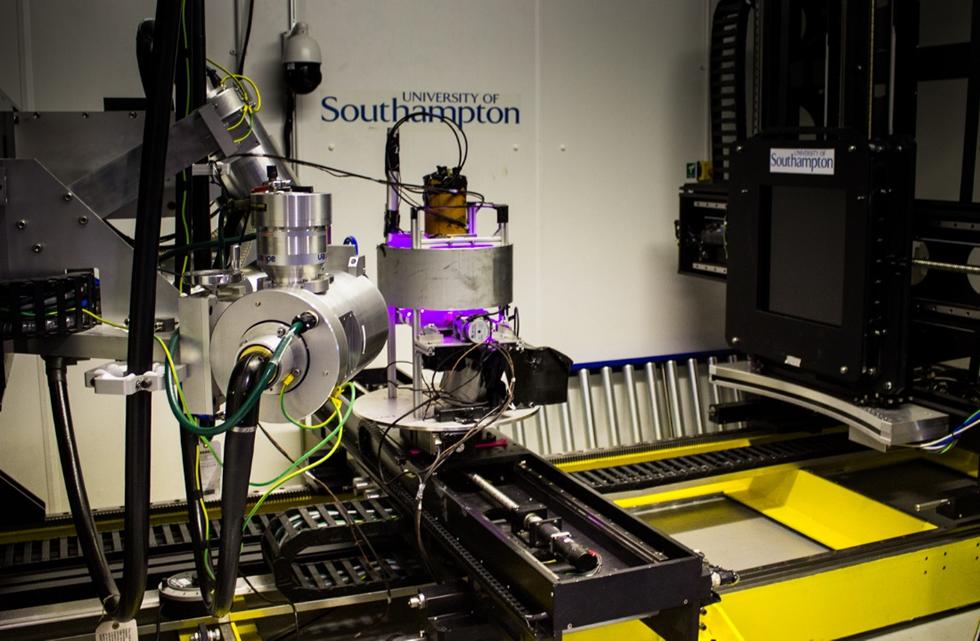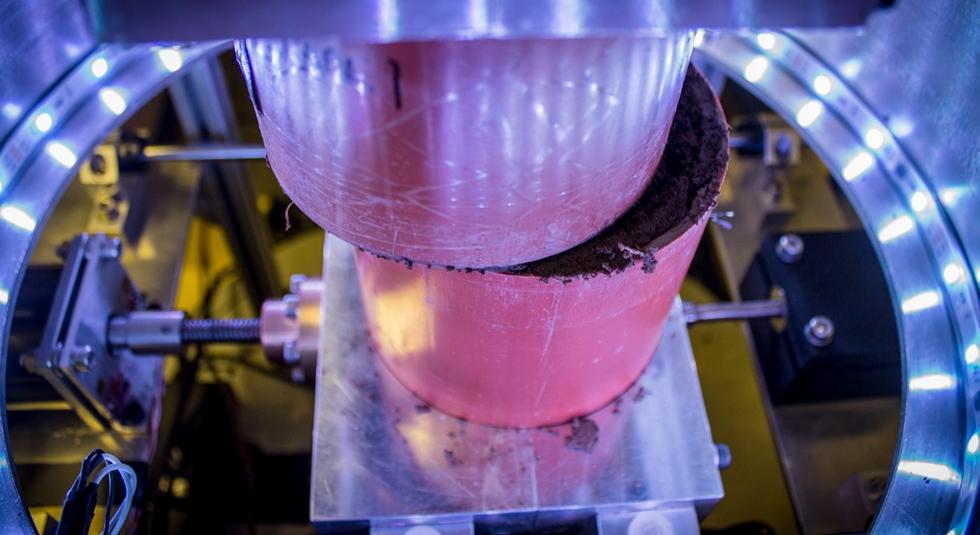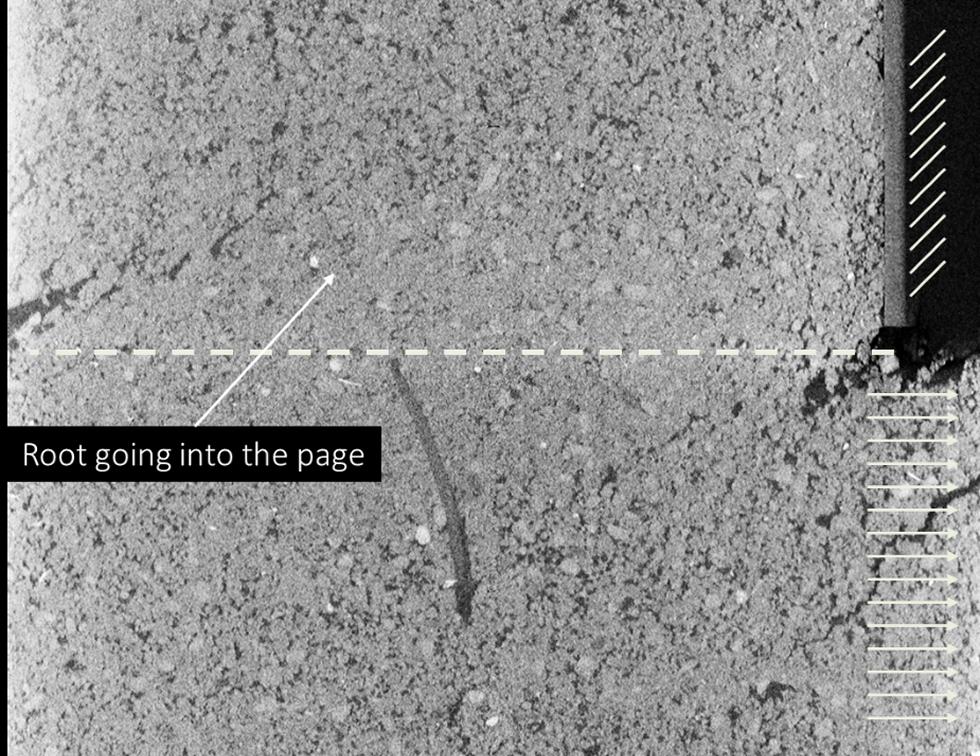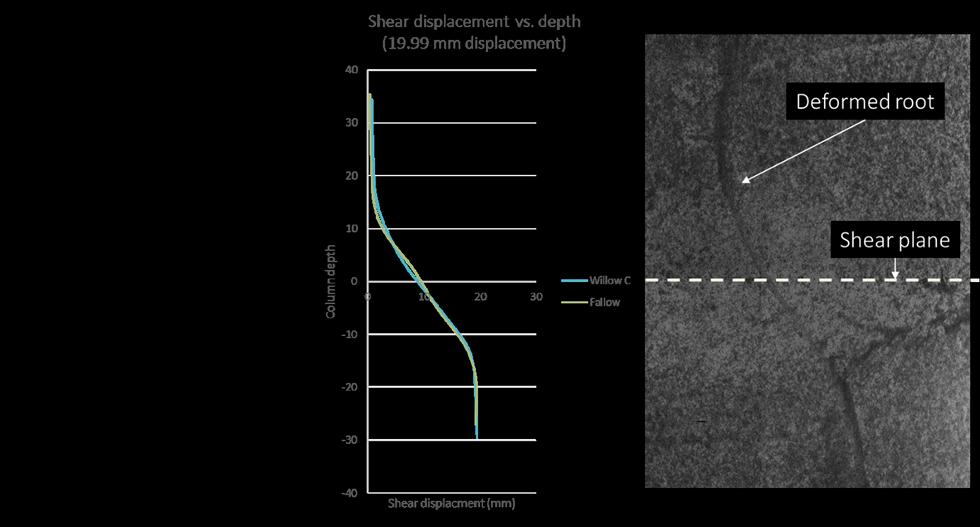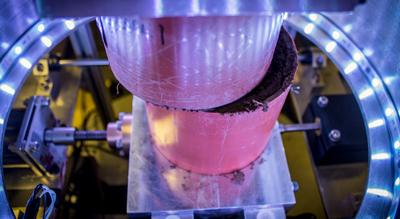
Daniel J. Bull, Ian Sinclair, Fabrice Pierron, Tiina Roose, Joel Smethurst
Background
Soil containing plant roots may be expected to exhibit a greater shearing resistance compared with the same ‘unreinforced’ soil, providing enhanced stability and effective erosion control, particularly for earth slopes. To be able to rely on the controlling shearing resistance and stiffness of root-reinforced soils, it is important to understand and quantify the potential effectiveness of root reinforcement. This requires sophisticated multiscale models, building understanding at different length scales, from individual root-soil interaction through to full soil-profile or slope scale. One of the challenges with multiscale models is ensuring that they are representative of real behaviour, and this requires calibration to detailed high-quality experiments. The focus of the project is to capture and understand the root-reinforcement behaviour and associated root and soil deformation mechanisms during direct shear at the macroscopic to millimetre length scales.
Role of Computed Tomography
X-ray computed tomography (CT) was used to capture the 3D behaviour of soil deformation and its interaction with root reinforcement during an applied shear load. A novel shear box was developed to operate within a large-scale CT scanner enabling incremental shear loads to be applied to a column of soil containing unrooted and rooted specimens (Willow and Gorse plants). The rig was constructed to apply shear displacements within a 110 mm diameter and 500 mm long column of rooted soil. The test procedure interrupted the shear displacement at 3.33 mm increments from 0 to 20 mm displacement, taking CT scans at each point. To obtain full-field 3D displacements and strain component information, digital volume correlation was applied to the CT dataset. Digital volume correlation is a relatively new technique which tracks the movement of internal volumetric features to obtain a deformation map of the structure. A quantitative understanding of the local deformation and movement of soil within the shear plane, and the effects of the root-reinforcement during the application of shear displacement was revealed and will aid in the validation and development of models.
Figures
- Direct shear box experiment performed in situ within the Hutch X-ray CT scanner facility at Mu-VIS. The rig is fully instrumented with displacement, load and tensiometer sensors and is controlled externally outside the Hutch. A single data cable connects the rig to an external controller – the cable is fed through the Hutch via a labyrinth
- Close-up view of the direct shear test loading rig
- X-ray CT cross-section showing the deformation of soil and reinforcing root after an applied shear load
- Plot showing soil shear displacements at the shear plane from digital volume correlation data. The shape of the measured shear band corresponds with the deformed geometry of the root
